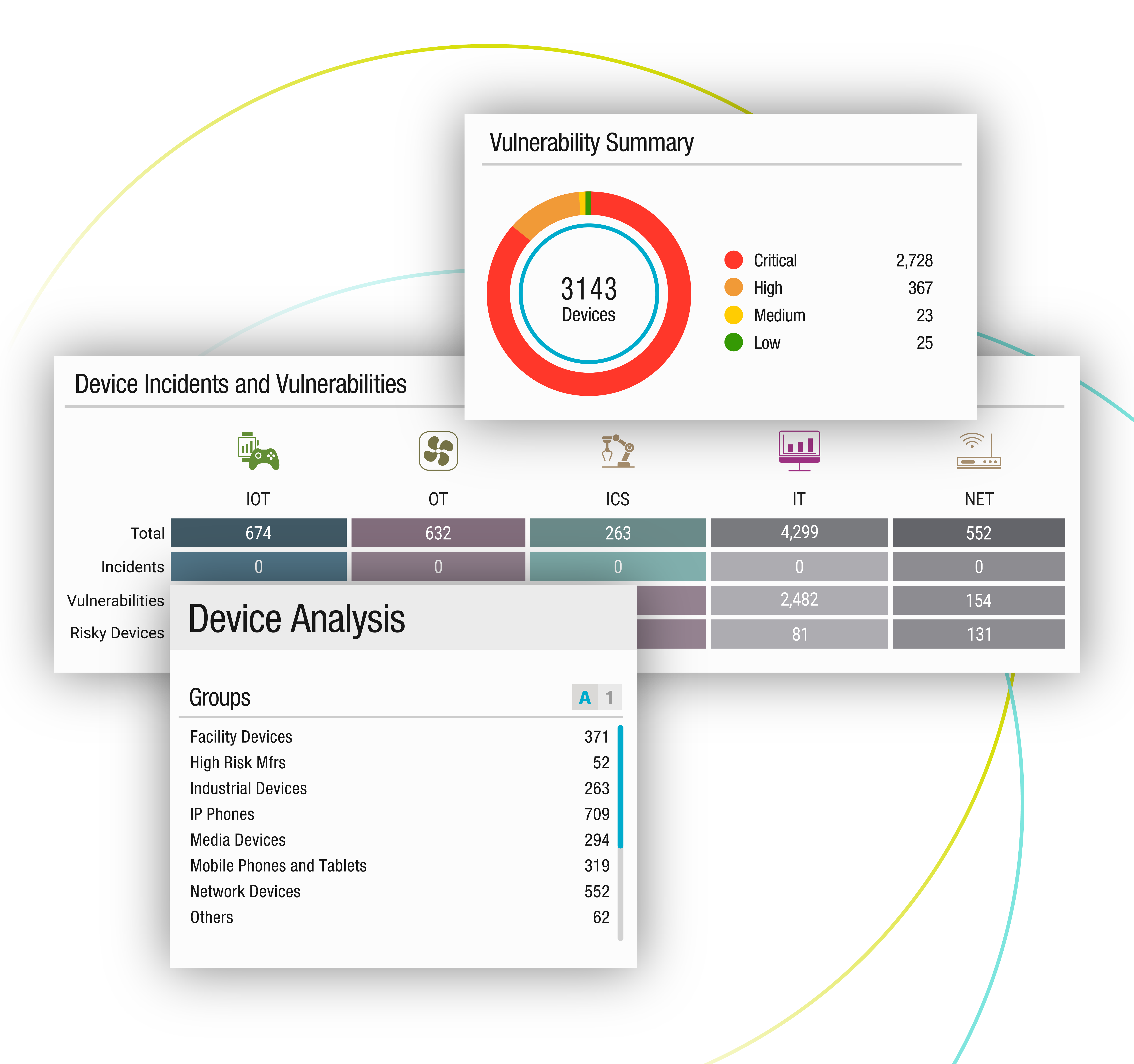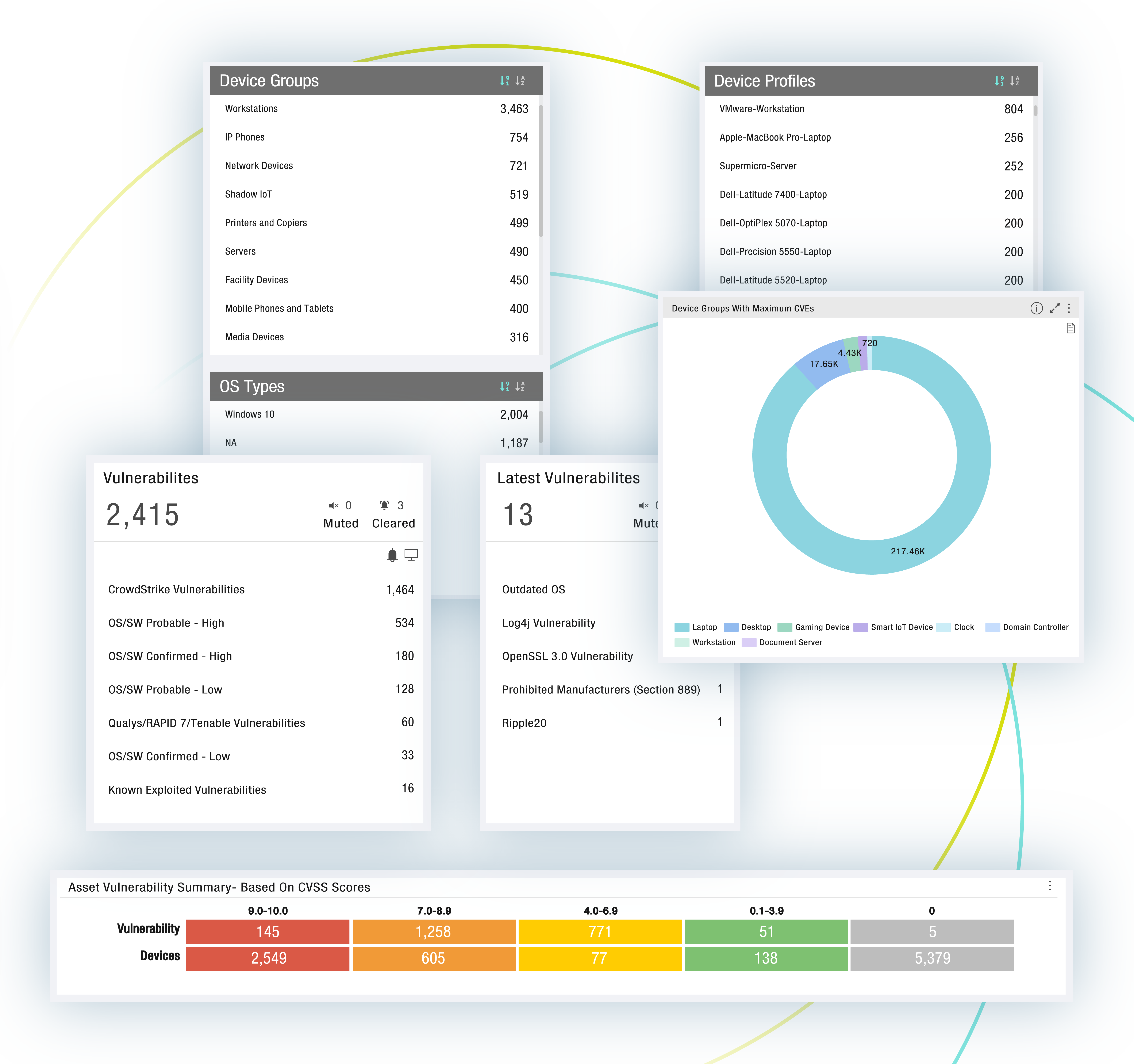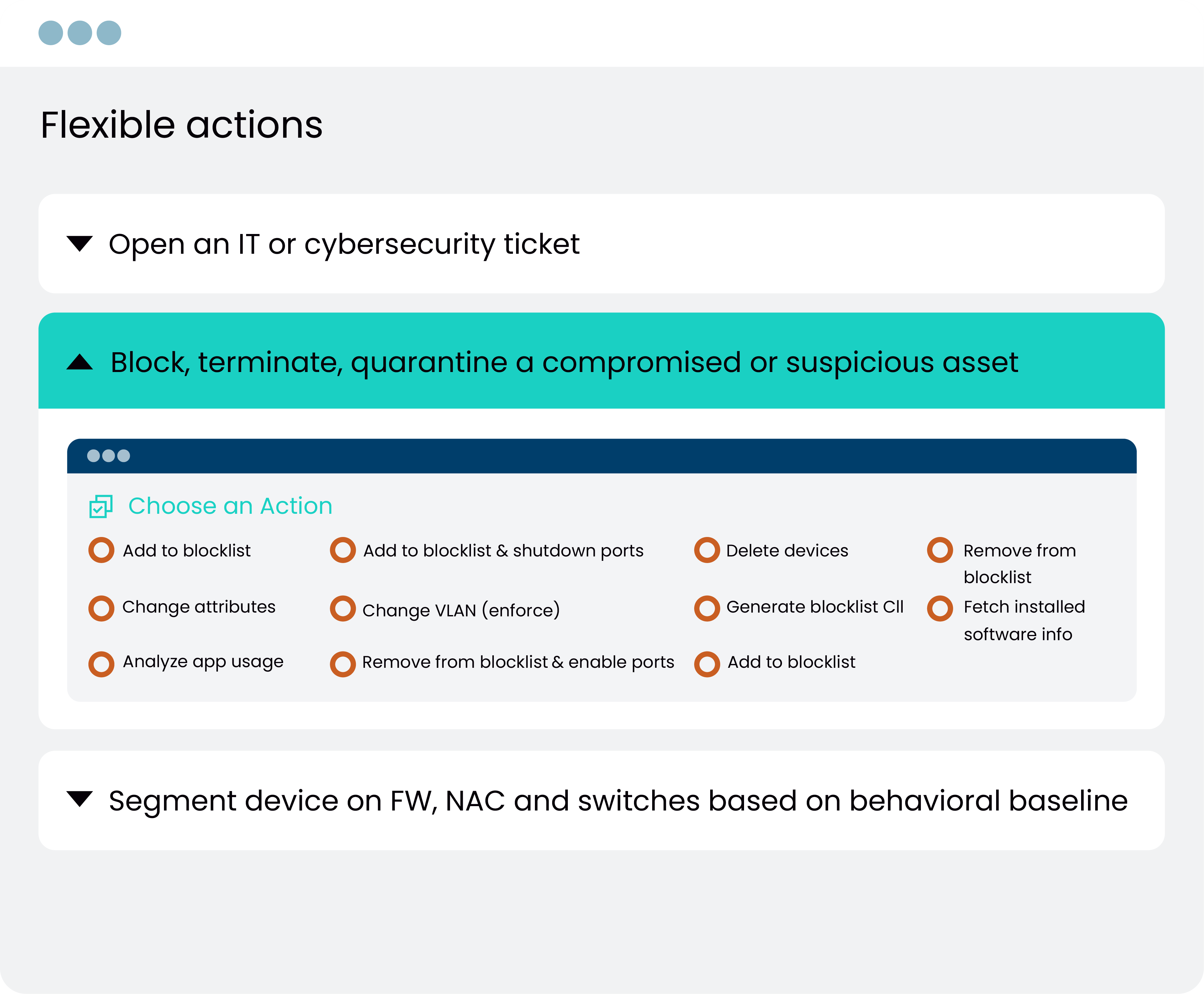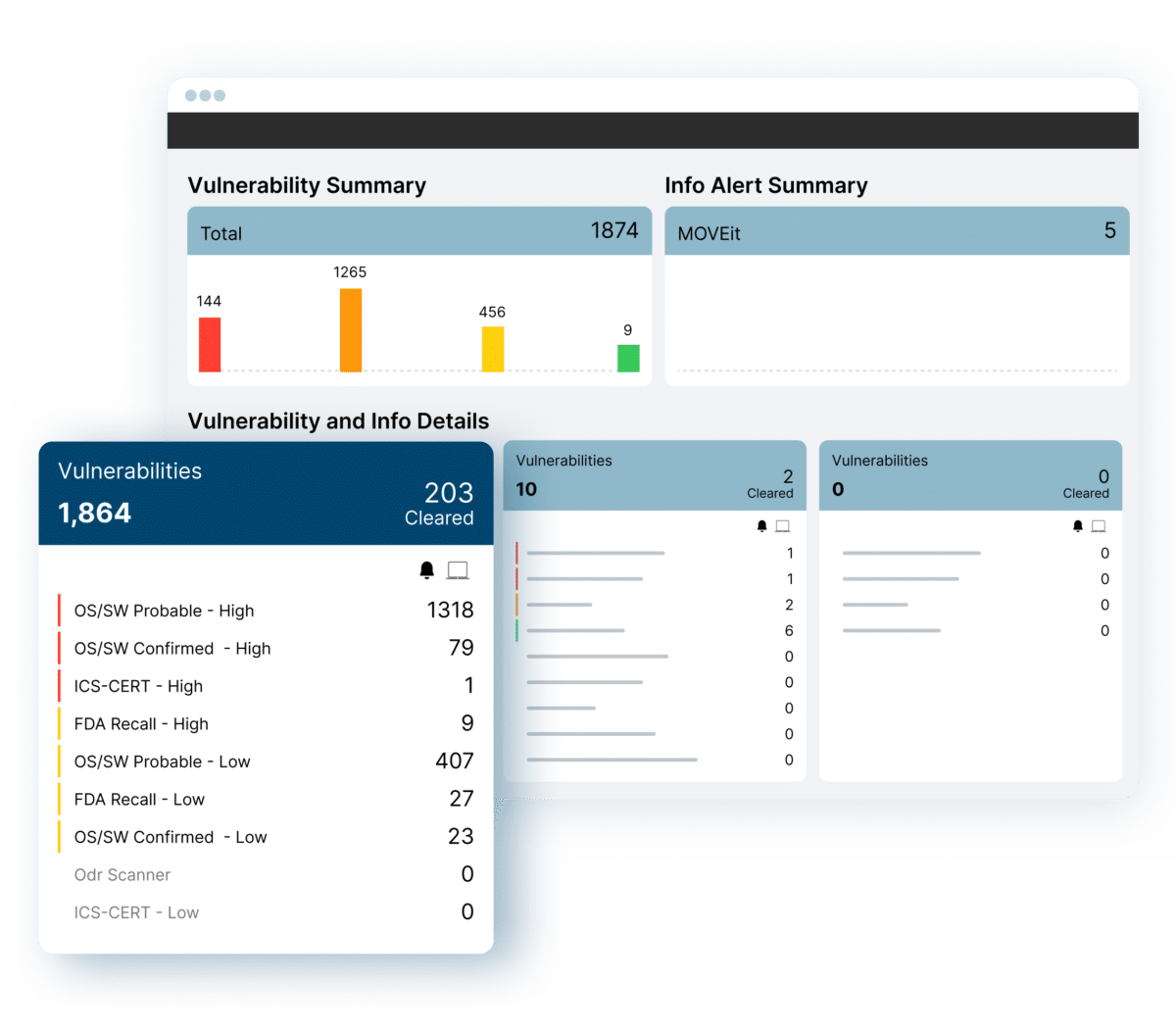Respondents on asset visibility issues
%
45% of professionals agree that lack of common view of assets across security and IT teams causes vulnerability patching delays.
Respondents say vulnerability prioritization is an issue
%
Failure to prioritize vulnerabilities is an issue. Risk-based prioritization help teams focus on the right ones for the business
percent fewer breaches with risk-based vulnerability
%
80% of organizations observe fewer breaches when they use a risk-based vulnerability management approach.
VULNERABILITY DETECTION
Discover and Understand the Complete Vulnerability Landscape
Ordr uses a combination of API data collection, proprietary discovery methods, and AI/ML classification to deliver accurate asset visibility and context. This asset data, mapped with vulnerability databases, provides a holistic and up-to-date view of your entire attack surface:
- Comprehensive vulnerability mapping via NVD, MITRE, ICS-CERT, FDA, Recall DB, OpenVAS
- No blind spots. Detect vulnerabilities on IOT, IOMT and OT devices without impacting operations
- Know if you’re vulnerable to a Zero Day. Ordr Scanner identifies zero days like Log4J, PrintNightmare, Ripple20

RISK-BASED PRIORITIZATION
Simplify Vulnerability Prioritization and Management
CVSS scores aren’t enough! Security teams need to focus on the vulnerabilities that bring the biggest risks to the business. Ordr empowers teams with asset risk scores for a risk-based approach to vulnerability management:
- Ordr Asset Risk Score considers factors like asset context, CVSS scores, vulnerability exploitability, type of data (encrypted), location and more
- Ordr Software Inventory Collector delivers accurate OS, application and patching details

VULNERABILITY REMEDIATION
Automate Remediation And Segmentation
Every unpatched vulnerability is a potential threat vector. Accelerate vulnerability remediation or mitigation with automated workflows and policies, assigned to the right owner.
- Integrate with ITSM workflows and assign remediation to the right device owner
- Create Zero Trust segmentation policies for assets running outdated operating systems that cannot be patched, limiting to baseline communications
- Create segmentation policies for vulnerable assets until patches or resources are available

Customer Case Studies


The visibility that we now have into our networked devices and their software inventory gives us greater assurance that we are properly maintaining and securing our systems to ensure that we can continue to provide excellent service and patient care.
Stacy Estrada
Information Security Manager, Montage Health

Using Ordr’s device-centric threat and anomaly detection, Veritex Bank has also been able to detect and quickly address issues, even before being notified by our virtual SOC. This has helped the team accelerate response.
Bob Ludecke
CISO, Veritex Bank


Ordr automatically discovers all our managed and unmanaged devices and delivers critical insights through a real-time dashboard. Ordr also generates policies by type and enforces them to support microsegmentation, zero trust, and other network access controls.
Director of Information Security
Automotive Manufacturer



